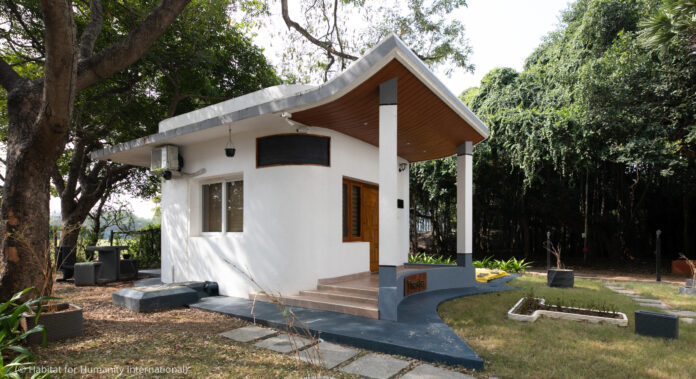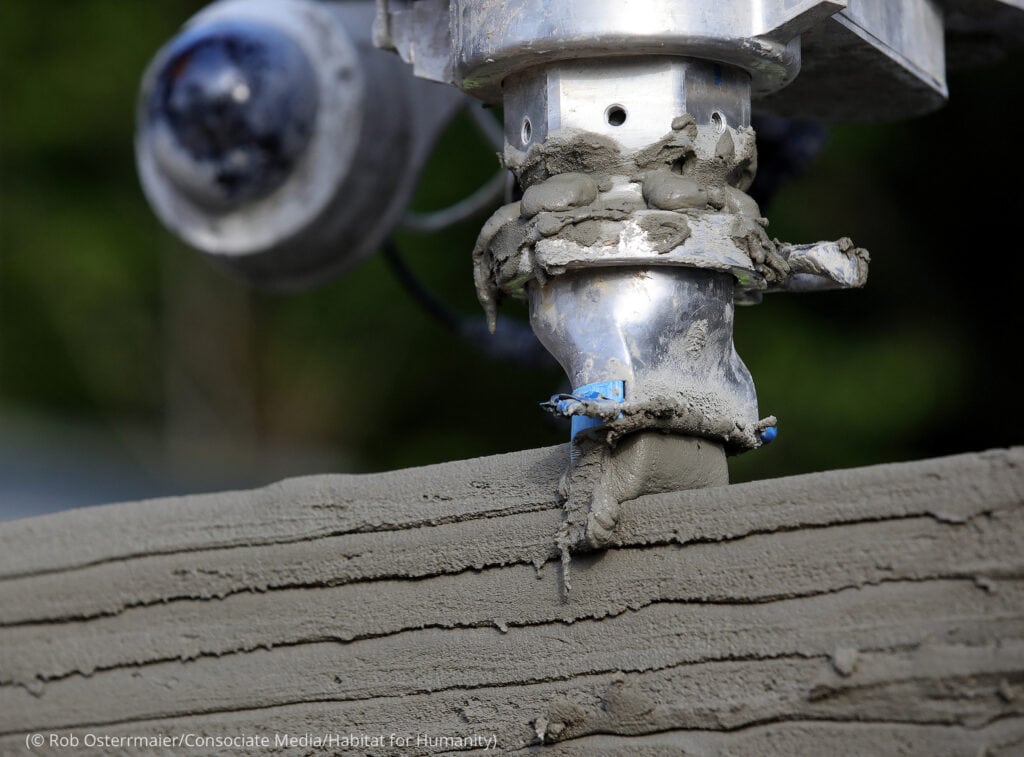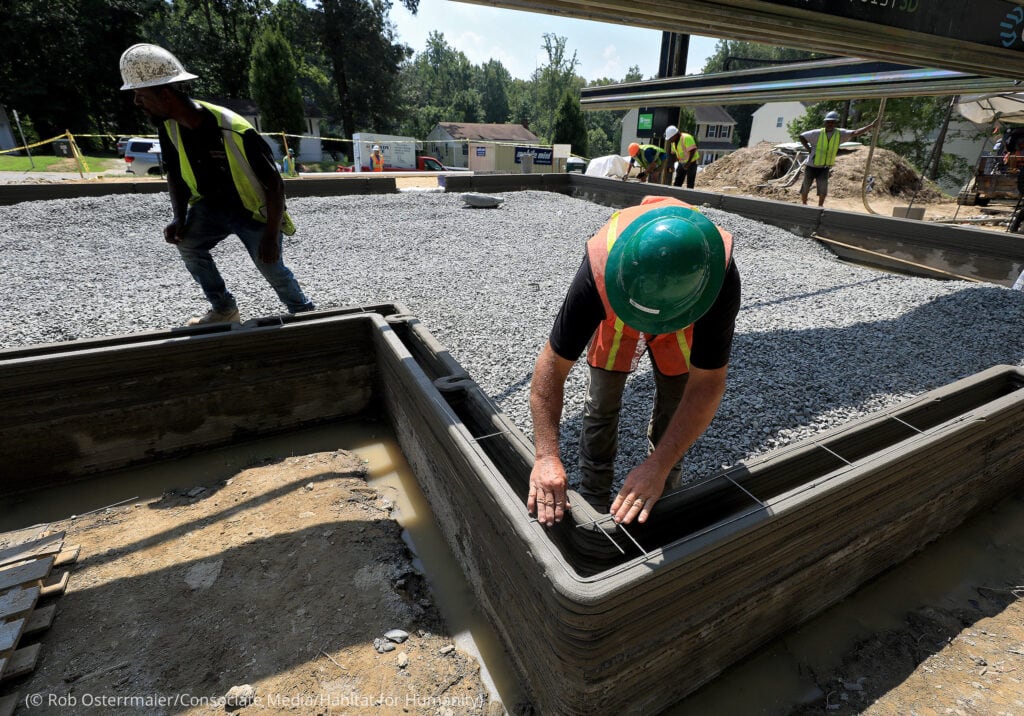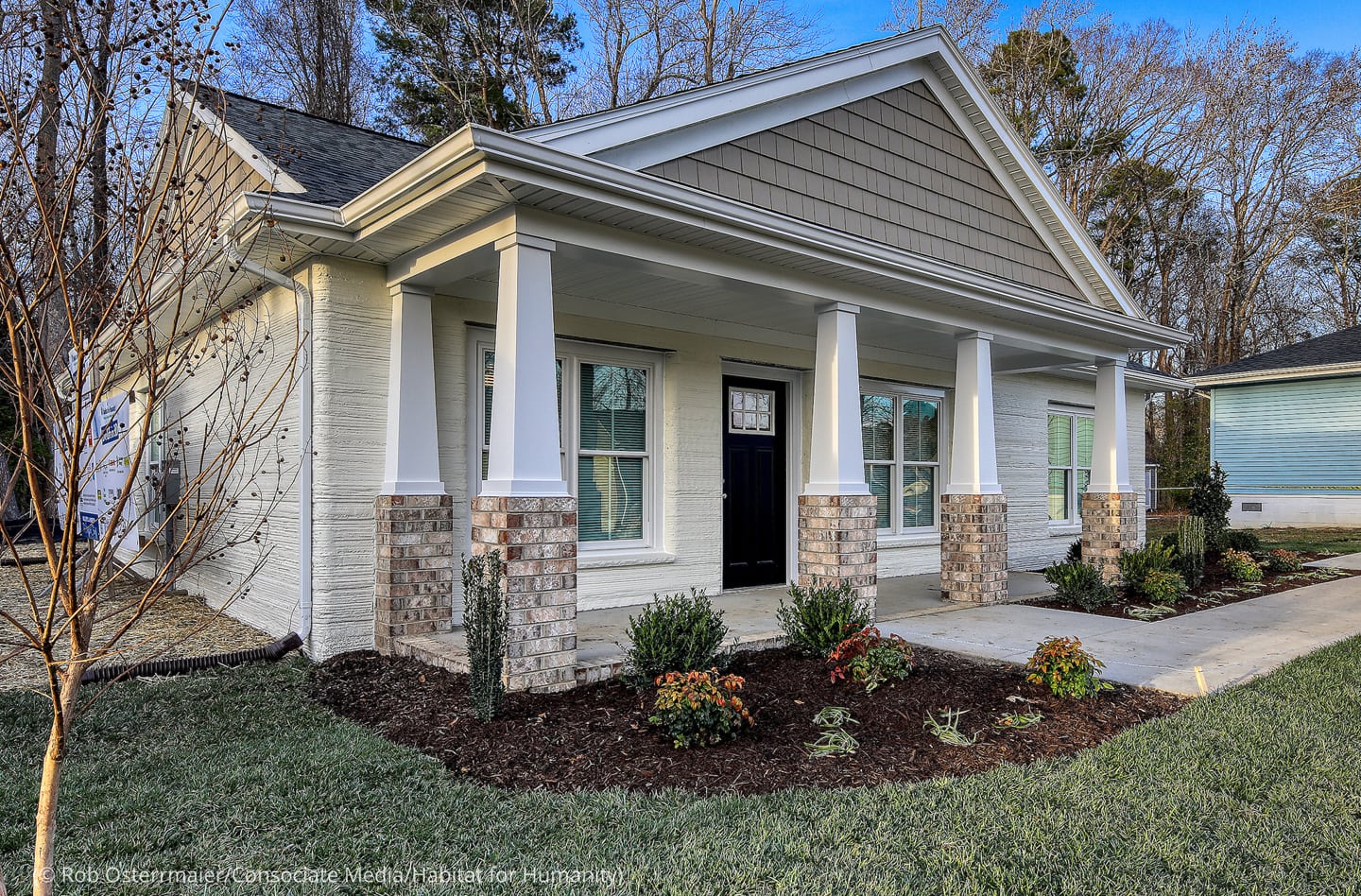If 3D printers can be used to make prosthetic limbs and topographical maps, why not houses? Habitat for Humanity, a U.S. nongovernmental organization, is providing funding for architecture firms to make houses using 3D printers for families in need.

“Many local Habitat organizations are seeking alternative ways to increase affordable home production,” a spokesperson for the NGO said. “Habitat views 3D-printed home technology as an emerging technology that has the potential to increase our impact on affordable housing.”
So far, the organization has helped build three 3D-printed homes — two in the United States and one in India.
Tvasta Manufacturing Solutions built the first 3D-printed house in collaboration with the Habitat for Humanity team in Chennai, India, in November 2020. The firm printed a 56-square-meter concrete home in 30 days but hopes to cut the building time down to closer to five days.
The technology limits building-material waste, is 30% cheaper than other types of construction and can weather high winds and rain.
The 3D-printed house in India not only has “a smaller carbon footprint during the construction process, but also over the lifetime of the house,” Adithya Jain,

Tvasta’s co-founder and chief executive officer, told Reuters.
A year later, the NGO funded Alquist, a Maryland-based 3D-printing company, in the construction of a 3D-printed house in Williamsburg, Virginia — the first in the United States. Habitat for Humanity also funded a third house in Tempe, Arizona, that completed construction in March.
Alquist began building the Williamsburg house in July 2021 and completed it in December 2021, using a 3D printer for the exterior walls and traditional methods for the interior.
The house is powered by solar electricity and includes its own 3D printer, so the

homeowners can make accessories such as doorknobs and light-switch covers.
“What you see,” said Alquist founder and CEO Zachary Mannheimer, “is four years of blood, sweat and tears of figuring out how to make this happen.”
The Habitat for Humanity funding allowed Candelaria Design — an Arizona architecture firm — to build the Tempe house using a 3D printer for the interior and exterior walls. The finished home has three bedrooms and two bathrooms.
“If we can deliver decent, affordable, more energy-efficient homes at less cost, in less time and with less waste, we think that could be a real game-changer,” said Jason Barlow, President and CEO of Habitat Central Arizona.
Source: share.america.gov, by Noelani Kirschner


